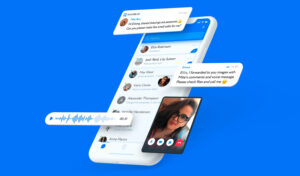
In June 2000, LG introduced the first internet-connected fridge. These ‘smart fridges’ were able to create grocery lists and link to smartphone apps, allowing users to control the temperature remotely, be alerted if the door was left open, and access online recipes based on their fridge contents.
However, up until recently, smart fridges have not been commonplace in the everyday household. This is partly due to the existing smart fridges being expensive and underwhelming in terms of functionality.
That said, since smart fridges first entered the market, other complementary technologies developed elsewhere. IoT and AI have made huge leaps in their real-world capabilities. In financial services, machine-learning is being used to better assess a consumers’ credit. Elsewhere, Estonia has implemented an AI-based system to adjudicate over small claims court proceedings. Consequently, smart fridges have been quick to adopt certain aspects of AI and IoT(Internet of Things).
The arrival of the AI-powered fridge
As with many other modern home appliances, smart fridges are connected or networked devices. However, technology startups are looking at running AI on top of the networked layer.
Whisk, a UK startup, is a smart food platform that uses deep learning and natural language processing (NLP). With the addition of cameras inside the smart fridge, Whisk’s AI-enabled software identifies different food items. The system then suggests recipes based on the food available.
Whisk also helps users plan meals over the course of a week. By creating smart shopping lists based on the ingredients for recipes, users can plan ahead and purchase the food they need.
Startups tackling the food waste problem
1.3 billion tonnes of food is wasted every year. This waste accounts for a third of all food produced globally. Swedish startup Karma has partnered with appliance manufacturer Electrolux in an effort to reduce the amount of food thrown away.
Electrolux is installing a series of smart fridges in public locations across Sweden, the UK and France. The idea is to connect the fridges to Karma’s app, allowing restaurants and supermarkets to sell surplus food, that would otherwise be thrown away.
“1.3 billion tonnes of food is wasted each year.”
Food and Agriculture Organization of the United Nations
Similarly, Amazon has secured a patent for a ‘scent-based spoilage sensing refrigerator’ – chemical detecting sensors which recognise if food is going bad. The technology can also integrate with the company’s virtual assistant, Amazon Alexa. The integration is useful as it allows users to create and check shopping lists via Alexa.
Elsewhere, Munich-based startup Brezzl has developed a product to be retrofitted into non-smart refrigerators. ‘Fridge-eye’ is a camera that can be attached to any fridge and takes a photo every time the door closes. The images are then stored in an accompanying app. When users are out shopping, they can then check the app to see what’s in the fridge. As a result, users save money and prevent food waste.
Meanwhile, Turkish home appliance manufacturer, Beko, has developed a fridge that mimics the 24-hour sun cycle within the refrigerator. The varying light means that fruit and vegetables are exposed to a system that mimics the natural, outdoor growth of produce and subsequently helps keep items fresher for longer.
A staple kitchen appliance
Up until now, the functionality of smart fridges has been somewhat limited. New technology like cameras, natural light cycles, and AI have the potential to reboot the popularity of smart fridges. As fridges and other platforms or devices become better connected, smart fridges are likely to become a staple kitchen application in the near future.




